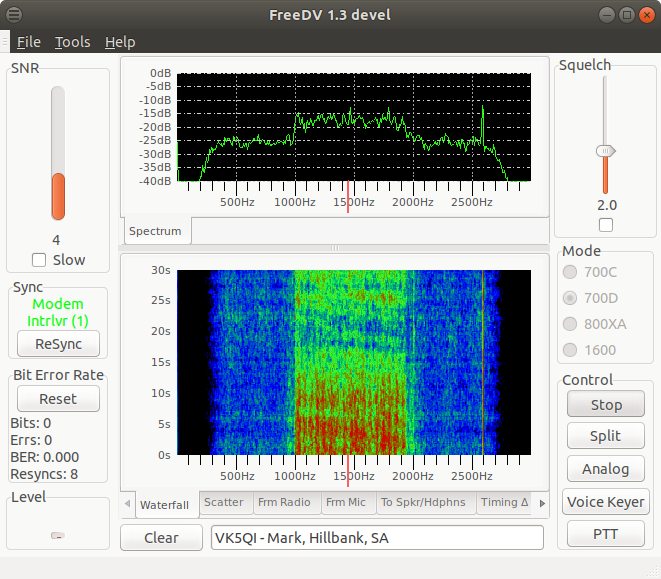 Many amateurs are experimenting with various digital voice modes, such as Yaesu System Fusion C4FM, D-STAR and DMR etc, mostly on the VHF and UHF bands. Did you know, however that there is also a digital voice mode for HF radio operation that was specifically designed by amateur radio experimenters?
Many amateurs are experimenting with various digital voice modes, such as Yaesu System Fusion C4FM, D-STAR and DMR etc, mostly on the VHF and UHF bands. Did you know, however that there is also a digital voice mode for HF radio operation that was specifically designed by amateur radio experimenters?
FreeDV, based on a fully open source codec known as Codec2, has been created by David Rowe VK5DGR in collaboration with a team spread across the globe.
FreeDV is enabling amateur radio enthusiasts to experiment with new open source digital based voice transmission techniques on the High Frequency (HF) bands. While text based HF digital modes are common, FreeDV is the first new VOICE mode for HF since SSB was introduced in the 1950s and 60s.
New version of FreeDV – 700D announced
Over the past 18 months or more, David and his team have been busy working to improve the lower bit rate versions of FreeDV. The original system, released as FreeDV 1600, was based on a 1600bits/sec data stream, but was a few dB off being equal with SSB. Now, David is pleased to announce that the new FreeDV 700D mode is ready for wider trials.This new version uses a 700 bit/s speech voice codec, powerful forward error correction, and a new modem to send digital speech over HF radios.
What is really exciting however is that testing of FreeDV 700D has demonstrated that it is outperforming SSB on poor channels! Here is a demo of SSB, followed by FreeDV 700D, on a poor quality 3,200 km path between Adelaide and the Bay of Islands, in New Zealand.
Where can I get it?
You can run FreeDV using any PC set up for digital modes, using the FreeDV 1.3 GUI program, which you can download from freedv.org.
Where can I find FreeDV activity?
Australian FreeDV activity is typically on 7.177 and 14.236 MHz. You can also coordinate FreeDV QSOs using the FreeDV QSO finder at qso.freedv.org
So why not try the new FreeDV 700D mode, and join us in experimenting with it on the HF bands!

Pingback: FreeDV 700D Released | Rowetel